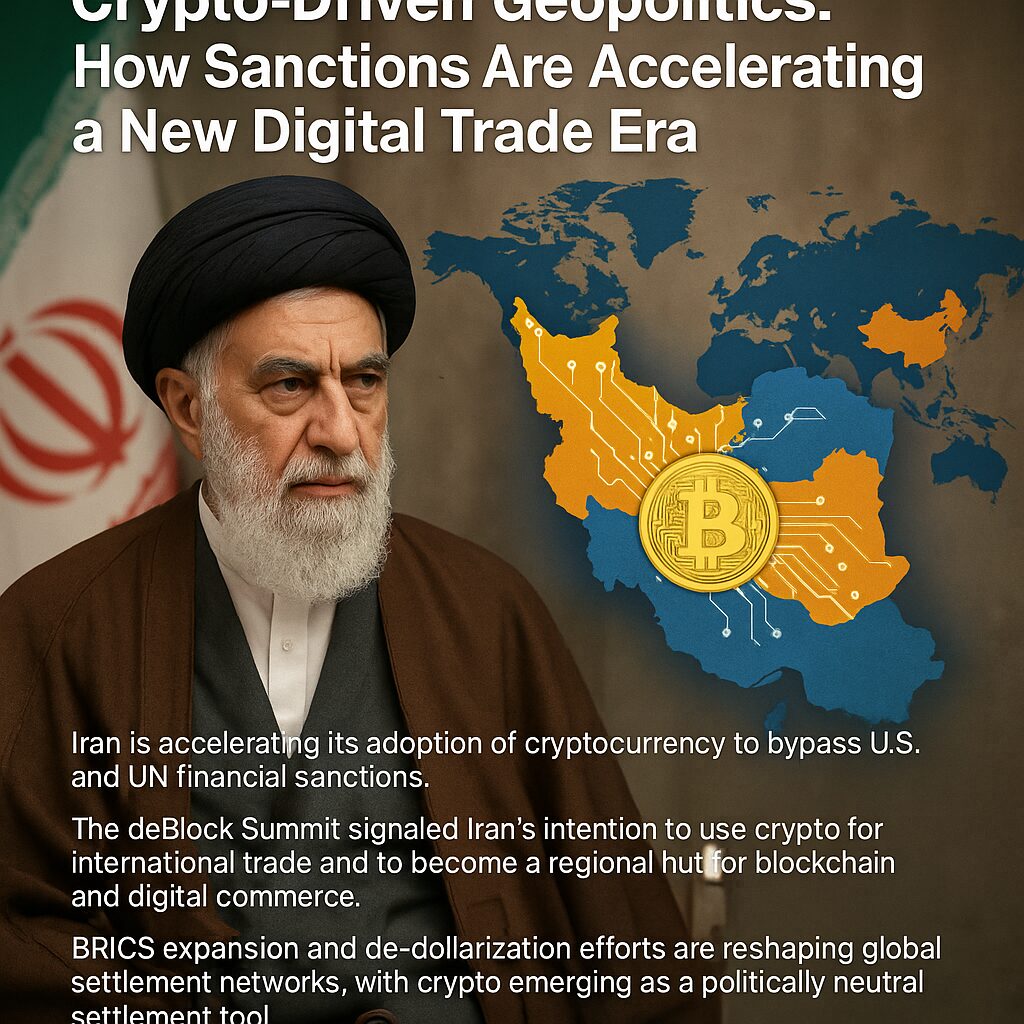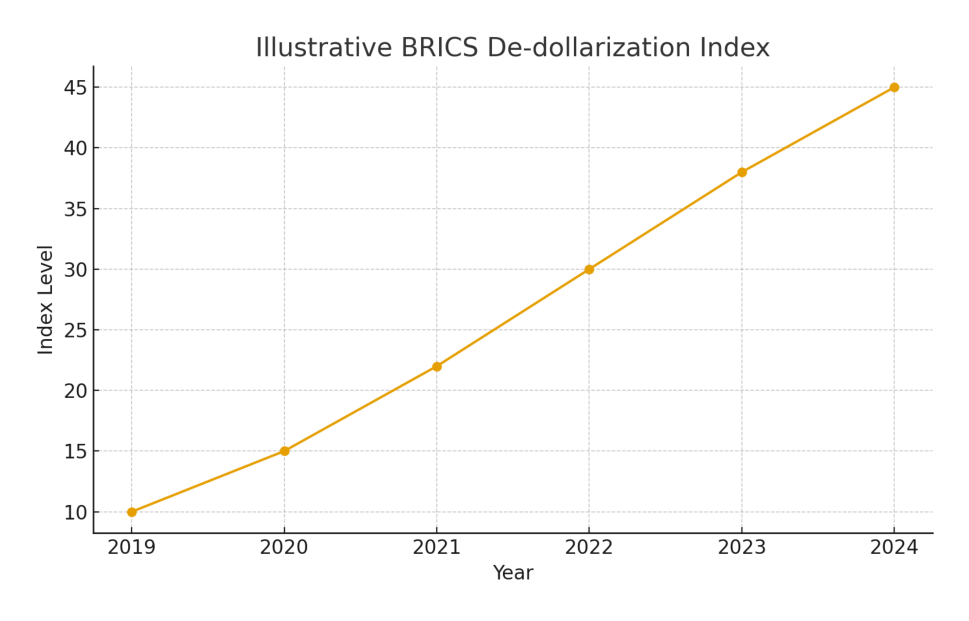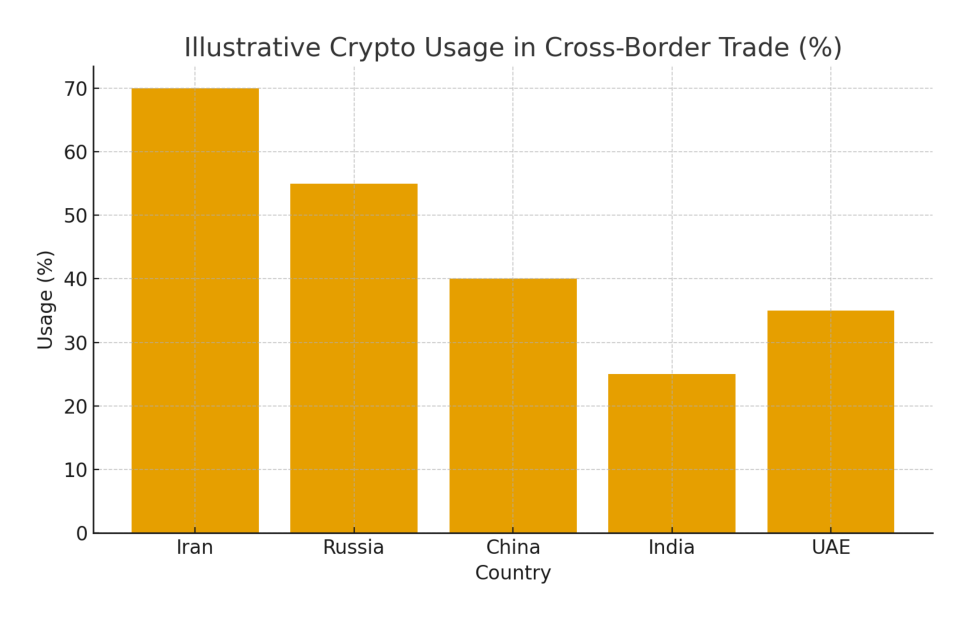
Main Points:
- Iran is accelerating its adoption of cryptocurrency to bypass U.S. and UN financial sanctions.
- The deBlock Summit signaled Iran’s intention to use crypto for international trade and to become a regional hub for blockchain and digital commerce.
- BRICS expansion and de-dollarization efforts are reshaping global settlement networks, with crypto emerging as a politically neutral settlement tool.
- Domestic regulatory uncertainty in Iran continues to slow institutional participation despite government-backed initiatives.
- As geopolitical pressures intensify, crypto-based trade rails may create new market opportunities for investors and infrastructure providers.
Introduction: A New Phase in Sanction-Era Economics
Iran’s geopolitical and economic landscape has been shaped by decades of sanctions led by the United States, the UN, and major Western allies. These restrictions have blocked Iranian financial institutions from global banking systems and, most critically, from the SWIFT messaging network that enables cross-border settlement. As a result, Iran has increasingly explored cryptocurrency not as a speculative asset but as a practical instrument of survival and international trade.
At the government-backed deBlock Summit, Iranian officials presented a clear vision: digital assets will become an essential tool for sustaining global commerce under sanctions. The event marks one of the first formal and coordinated efforts by the Iranian state to articulate a strategic shift toward crypto-based settlement systems.
Below, we explore Iran’s crypto strategy in depth, connect it to broader BRICS-led de-dollarization, highlight regulatory gaps, and assess investment implications for readers seeking new digital-asset opportunities.
1: Iran’s Strategic Pivot Toward Cryptocurrency
1.1 Crypto as a Sanctions Bypass Mechanism
Mohammed Bagher Ghalibaf, Speaker of the Iranian Parliament, emphasized during the Summit that cryptocurrency can provide alternative payment routes that do not depend on Western-controlled infrastructures. According to his statement, crypto is not optional but “an essential measure” in the current sanctions environment.
The logic is straightforward:
- Traditional banks avoid transactions involving Iran due to secondary sanctions risk.
- SWIFT disconnection prevents Iranian banks from sending authenticated payment messages.
- Correspondent banking relationships with European and Asian institutions have deteriorated.
- Crypto networks, by contrast, operate without political discretion or centralized censorship.
As a result, Iran has already tested small-scale imports settled with Bitcoin, and state agencies have experimented with mining operations despite regulatory gray zones.
2: BRICS, De-dollarization, and Iran’s New Trade Channels
Iran’s crypto ambitions are tightly bound to BRICS—now expanded to 10 countries including Iran, the UAE, Egypt, Ethiopia, and Indonesia.
2.1 De-dollarization as a Core Objective
BRICS has always possessed a shared interest in reducing the global dominance of the U.S. dollar. At the Summit, chairman Pooria Asteraky reiterated that digital assets, being decentralized and politically neutral, could serve as a viable alternative settlement instrument.
2.2 Trump, India, and BRICS Internal Frictions
While many BRICS members support the de-dollarization trend, there is no unified consensus:
- Former U.S. President Donald Trump has warned that BRICS’s alternative currency ambitions threaten U.S. economic power.
- India remains cautious; its foreign ministry maintains that the dollar’s role should not be abruptly challenged.
- Russia and Iran, heavily sanctioned, are the strongest proponents of crypto or alternative currency infrastructures.

This illustrative chart represents the accelerating political momentum behind de-dollarization, a trend directly correlated with increased use-case exploration in crypto settlements.
3: Domestic Regulatory Challenges Inside Iran
Though the Iranian government promotes digital assets for international trade, the domestic crypto industry faces significant regulatory ambiguity.
3.1 Industry Concerns: Lack of Clarity and Transparency
Ehsan Mehdizadeh, CEO of Wallex Iran, criticized the current environment:
- Regulations lack consistency.
- There is limited guidance on compliance requirements.
- Blockchain expertise within government agencies is insufficient.
- Businesses face operational uncertainty, especially regarding conversions between fiat rial and crypto.
3.2 Central Bank Restrictions
The Central Bank of Iran (CBI) is the sole regulator of the crypto ecosystem and has implemented strict rules to prevent capital flight:
- Converting Iranian rial to crypto via domestic platforms is prohibited.
- Mining is legal but subject to unstable electricity policies.
- Platforms face tight scrutiny and lack a unified licensing regime.
This creates a paradox:
Iran wants to use crypto for international trade, but its internal market is heavily constrained.
3.3 Mining Sector: Approved but Unstable
Iran legalized crypto mining in 2019, but its energy subsidies upended the ecosystem:
- High electricity subsidies attracted industrial miners.
- Government later increased energy tariffs, destabilizing profitability.
- Enforcement crackdowns created further uncertainty.
Despite these issues, Iran remains one of the top 10 countries in global Bitcoin hashrate estimates during certain periods.
4: Iran, BRICS, and the Broader Global Trend in Digital Trade
4.1 Crypto as a Neutral International Settlement Layer
Crypto’s appeal for Iran—and increasingly for other BRICS members—lies in its neutrality:
- No central authority controls permission.
- Assets can move globally without intermediaries.
- Smart contracts enable programmable trade instruments.
- Stablecoins and CBDC interoperability may soon simplify trade settlement.

The bar chart illustrates the relative interest and adoption of crypto-based settlement tools within BRICS and BRICS-adjacent economies.
4.2 The Rise of State-Directed Digital Trade Initiatives
Other sanction-affected or geopolitically constrained countries—such as Russia, Venezuela, and Myanmar—have also explored:
- Bitcoin settlement for imports/exports
- State-issued gold-backed tokens
- Cross-border CBDC pilots
- Digital commodity exchanges
The broader message: crypto is no longer fringe—it is becoming geopolitically strategic infrastructure.
5: Implications for Crypto Investors and Builders
For readers seeking new opportunities or practical blockchain applications, Iran’s strategic shift signals several investable themes:
5.1 Infrastructure Layer Opportunities
- Cross-border stablecoin rails
- Decentralized liquidity networks (DLN)
- Bridge protocols enabling censorship-resistant transfers
- Non-custodial payment gateways
5.2 Mining and Energy-Based Blockchain Models
Iran’s intermittent support for mining indicates rising demand for:
- ASIC hardware supply chains
- Power optimization software
- Modular mining containers
- Grid-stabilizing renewable mining solutions
5.3 BRICS Digital Currency Experiments
Several BRICS members are experimenting with:
- Interlinked CBDCs
- Commodity-backed stablecoins
- Multi-bank settlement tokens
- Regional clearinghouses using blockchain
These experiments could lead to the world’s first multi-nation blockchain settlement system, creating new liquidity routes investors can track early.
Conclusion: The Coming Era of Geopolitical Crypto
Iran’s clear embrace of digital assets marks a significant shift in the global monetary landscape. While the West debates regulations primarily from a consumer protection standpoint, Iran and BRICS explore crypto as a tool of sovereignty, resilience, and geopolitical leverage.
The implications are profound:
- Crypto will increasingly serve as a parallel international settlement system.
- Sanctioned and non-sanctioned states alike will explore politically neutral payment rails.
- Investors and builders positioned early in this transition may find large-scale opportunities as digital trade infrastructure matures.
Iran’s journey is not merely a regional story—it is a preview of how geopolitics, blockchain technology, and global finance will intersect in the next decade.

